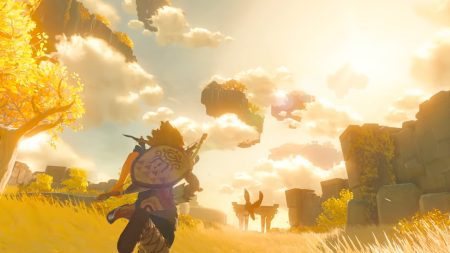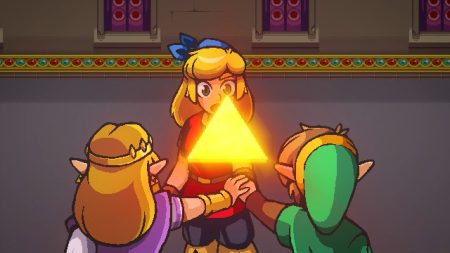A Fresh Take on a Classic
Despite some pre-release worries, Pokémon Legends: Arceus appears to have lived up to the hype as the most refreshing and exciting take on Pokémon in nearly two decades. The more open-ended gameplay, focus on exploration, and de-emphasis on gyms and battling make Arceus a more streamlined and entertaining experience than many of its predecessors, whose devotion to the past had grown stale.
As a result of new mechanics (such as stealth, crafting, and panicky resource management) and its various aesthetic choices, Arceus has drawn comparisons to The Legend of Zelda: Breath of the Wild, one of the best and most influential games of the last decade. A lot of games in recent years have clearly taken cues from the 2017 masterpiece, including Genshin Impact and Immortals: Fenyx Rising (still one of the worst game titles I can think of), so it would make sense that Nintendo’s most popular franchise would look in-house for inspiration.

The comparisons are understandable, and in some cases obvious. Much like Breath of the Wild, Arceus presents a more hazardous environment to the player, where dangerous denizens lurk at every turn. The art direction in Legends mirrors that of Breath of the Wild (though not quite as successfully), and both include a more subtle approach to background music while traversing open landscapes to magnify the sounds of nearby creatures.
Most importantly, Pokémon Legends clearly sought to subvert many of the conventions of previous Pokémon titles by refocusing much of the game’s verbiage toward catching and researching little monsters. Breath of the Wild did the same thing for Zelda by making the typical MacGuffin-laden dungeons secondary to getting lost in the world and playing around with its myriad systems.

Still, the comparison ends there, and in many ways does a disservice to both titles, as it ignores what makes each one unique.
The Major Differences Between Pokémon Legends: Arceus and Breath of the Wild
The two most notable differences between Pokémon Legends: Arceus and Breath of the Wild are almost immediately apparent: 1) Arceus’ egregious lack of visual and mechanical polish and 2) the fact it’s not really “open world” in the traditional sense, as there’s no interconnectivity between various biomes. Arceus may seem like a more open-ended experience, but it’s more clearly defined by its limitations than it first appears, both in terms of its visual fidelity and its approach to world traversal.
Part of the joy of traversing Hyrule in Breath of the Wild was finding out how far you could glide, how high you could climb, and just how broad the world was. Arceus, by comparison, offers better movement options through the ability to mount various Pokémon; however, you can’t climb any surfaces until you get Sneasel, and the map makes it clear you can’t go beyond clearly marked borders. What’s more, the difference in biome presentation doesn’t matter quite as much to the minute-to-minute experience, as the player doesn’t need to, say, put on warmer clothes in cold environments or equip wooden items during a thunderstorm.
(I won’t harp too much on the bad graphics in Arceus, as it seems everyone agrees it’s not up to par with Nintendo’s other offerings. That said, Breath of the Wild still looks gorgeous and runs on the same platform, so it was clearly a design choice to forego polish and mechanical fluidity in Arceus.)

The Finer Mechanics of Pokémon Arceus and Breath of the Wild
Moreover, Arceus annoys the player incessantly at the start with a seemingly endless barrage of cutscenes and many lines of poorly written dialogue. Breath of the Wild, on the other hand, has a couple of brief cutscenes at the start, but within a matter of minutes the player is free to go wherever they please without interruption.
Additionally, the cutscenes in Breath of the Wild clearly had more care put into them, with voice acting, more fluid animations, and a focus on character development. The majority of Arceus’ cutscenes feature stiff movements and animations, boring dialogue, and very little flare to them beyond the actual character designs. When it comes to voice acting, I don’t mind its absence all that much, but it just makes these conversations so much less interesting, leaving with me little to care about as I repeatedly mash the A button to just get on with it.
On the other side of the coin, Arceus appears to feature more monsters per capita than Breath of the Wild. Sure, Zelda has you fighting the occasional band of Moblins or a sleeping Hinox, but they’re largely a nuisance hindering the entrance to a shrine or some rare items. In Arceus, the monsters ARE the game. So while the world in Arceus may not be quite as expansive or intricate as that of Breath of the Wild, every step teems with opportunities to catch or fight other Pokémon, making the minute-to-minute gameplay more engaging at times.
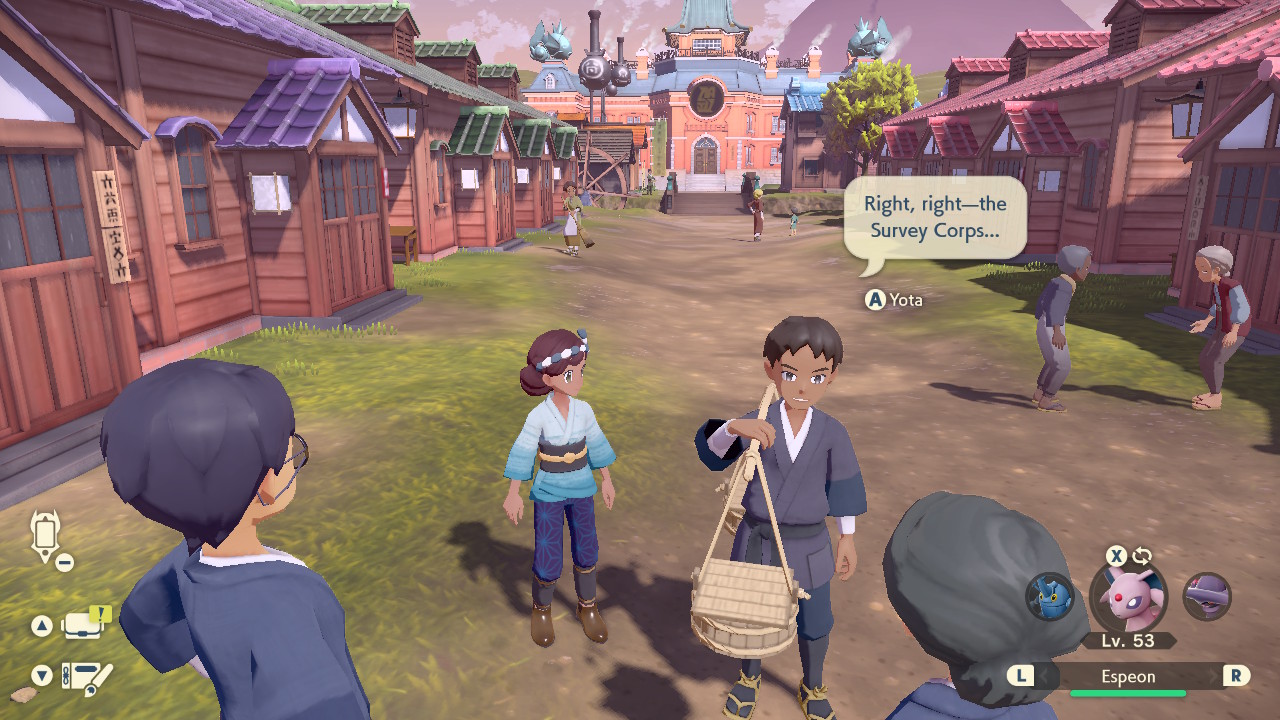
Two Fundamentally Different Worlds…
Beyond some of the mechanical elements (and there are plenty more obvious differences), Arceus and Breath of the Wild have very little in common narratively.
Arceus is largely about the importance of scientific research, the forming of bonds between humanity and nature, and community-building. (In a less generous reading, it’s about aggressive colonialism and forced animal domestication.) Breath of the Wild presents nearly an opposite story, where Link must search for answers following the collapse of his homeland and kingdom and prevent further destruction, even if he can’t reverse the damage that’s already been done. Maybe Arceus attempted to ape some of the more surface-level elements of Breath of the Wild, but fundamentally the two games want to achieve different goals narratively and conceptually.
In addition, each game approaches the importance and progression of its own plot differently. Breath of the Wild‘s arguably greatest achievement is allowing the player to play through the “story” entirely at their own pace. (E.g., you can fight Ganon at any time, and you can approach the Divine Beasts in any order you like or not at all.) Meanwhile, Arceus gives the player leeway to catch as many Pokémon as they like in between story beats, but the player has to experience the plot in a fully linear manner, the way one would in a traditional JRPG. Sure, you can do side quests here and there and explore the various biomes as much as you’d like, but you can’t challenge the final boss right away or skip certain Noble fights.
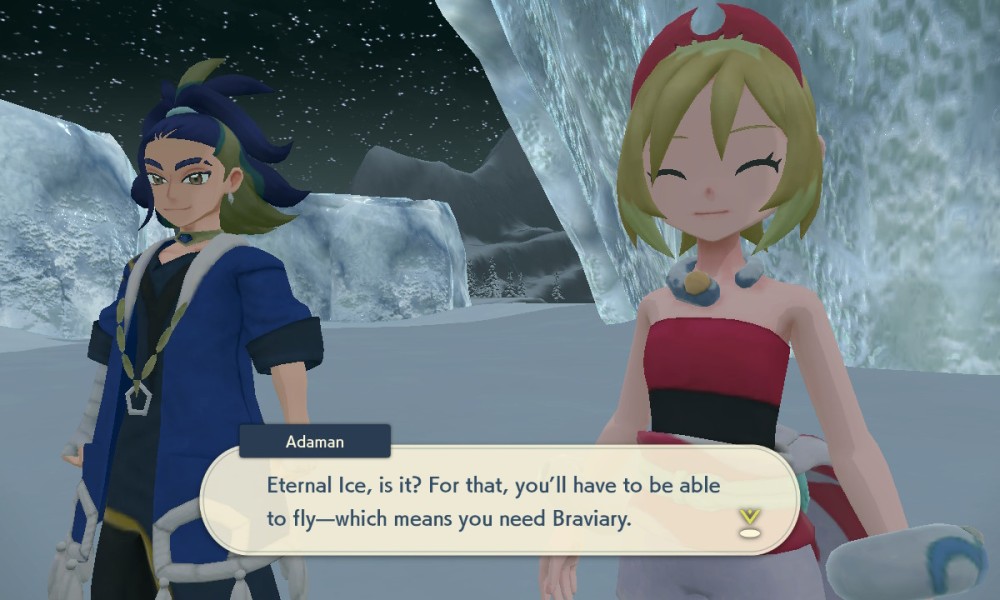
…And Two Fundamentally Different Philosophies
This linearity isn’t a bad thing per se. Breath of the Wild‘s open-ended nature lacked the gravity and excitement of big story moments found in previous Zelda games, so for some Arceus‘ more focused nature gives the story a little more weight. But the difference in each game’s storytelling process does imply a greater philosophical discrepancy.
Breath of the Wild wants every part of the game to feel open, from the traversal to the gameplay loop. These design choices, by extension, make the larger plot less relevant to the overall experience and the player’s definition of heroism less pointed. Meanwhile, Arceus wants the player to care deeply about not just the events of its story, but how the player’s free-form actions connect to it. The player isn’t just some Pokémon trainer who happens to be caught in some larger calamity (the way they are in other Pokémon titles); they are researchers tasked by local communities with educating the masses and quelling the angry beasts that threaten their safety. Playing Arceus means embodying that role regardless of how you play.
Pointing out these differences may seem trivial, but if we analyze Arceus as though it were simply “Breath of the Wild but Pokémon,” we dilute so much of what made Breath of the Wild stand out in the first place, as well as what makes Arceus stand out now. Even comparing Arceus to another pseudo-open world game, like Halo Infinite or Monster Hunter, undercuts what’s really going on with the latest Game Freak title. It’s brand new approach to Pokémon that adds a bunch of new mechanics to prioritize filling the Pokédex over all else. That alone makes it nothing like Breath of the Wild or any other game that tries to revolutionize a tired concept.
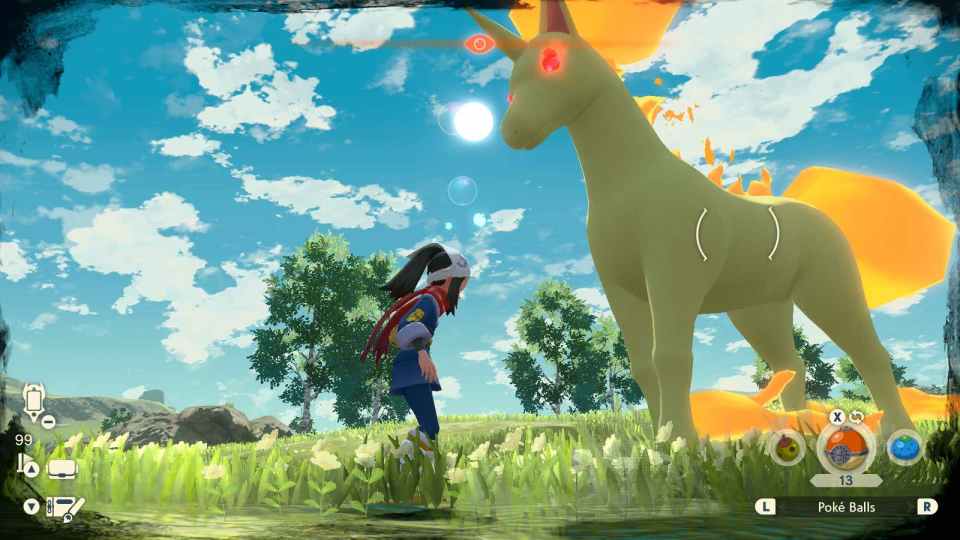
Enough With the Silly Comparisons
I’m loving Pokémon Legends: Arceus, even with all of its obvious and undeniable faults (seriously, the draw distance issues alone are infuriating). The game has exceeded my expectations, and I hope its success heralds positive changes for the future of the franchise. But let’s not get carried away. This is not Breath of the Wild, but I’m not certain it ever wanted to be.
And that’s OK! It doesn’t have to be. Arceus is fine being something else entirely. While I do think Breath of the Wild is a better game, Arceus is great in its own right, and I don’t think we’re doing the title any favors by comparing it to one of the loftiest achievements in the history of the medium. It’s great just the way it is, and we should recognize exactly what makes it special.
Interested in more think pieces on Pokémon Legends: Arceus or The Legend of Zelda: Breath of the Wild? Read why Arceus’s “Galaxy Member” deserves his own name, and check out our ranking of all Breath of the Wild characters.
Sam has been playing video games since his earliest years and has been writing about them since 2016. He’s a big fan of Nintendo games and complaining about The Last of Us Part II. You either agree wholeheartedly with his opinions or despise them. There is no in between.
A lifelong New Yorker, Sam views gaming as far more than a silly little pastime, and hopes though critical analysis and in-depth reviews to better understand the medium's artistic merit.
Twitter: @sam_martinelli.









